Visual Tracking – One of the Most Common Reading Problems + 8 Activities to Improve It
February 24th, 2009Today, I’m covering two very important areas of visual processing and one of them is one of the most common reading problems. There are actually 9 areas of Visual Processing that affect learning. The two areas that I’m covering in this post are visual tracking and visual language association.
The students I have worked with over the years had a variety of problems. Some of them were ‘falling through the cracks,’ they did not qualify for additional help within the school system. Some of the students had identified learning disabilities (LD), some were ADD or ADHD, others had asperger’s syndrome or were in the autism spectrum. Some of these students were homeschooled, some were in private schools, some in public schools.
And, over my 35+ years of teaching, approximately 90 – 95% of the students I worked with had visual tracking difficulties. It is a VERY common problem! If a child mispronounces words while reading aloud they are making phonetic mistakes that often stem from auditory processing difficulties or a combination of auditory and visual memory difficulties.
Visual Tracking: The ability to track one’s eyes from left to right in an efficient manner; it enables the task to be completed quickly. When your child skips or repeats words when they read aloud they typically have visual tracking difficulties. Visual Tracking is critical to reading fluently with ease.
1.Tracing Activities
2.Dot-to-Dot Activities
3.Do larger muscle movements, drawing on a chalkboard, following from left to right draw different shapes.
4.Play rolly-polly with a ball, rolling it back and forth to each other.
5.Play catch with a ball or bean bag.
6.Find the abc’s in abc order on a page. There are books that are set up to do this.
7.Use reading drills like Five Minutes to Better Reading Skillsthat is set up for working on visual tracking as well as visual closure and rapid naming simultaneously.
8.Use Maze books. They come in a range of difficulty, so pick one that is appropriate to your child.
Visual Language Association: The ability to formulate associations between pictures of objects.
1.Create a set of 4 or 5 pictures or objects. Have one of the group NOT belong to the group.
2.Pick out the picture that doesn’t belong and explain why.
3.Find all of the objects in the room that have 4 corners, 3 corners, and circular, etc.
4.View an object or picture of an object and state where the object would belong e.g. trees, plants, shoes, boots, books, pencils, etc.
5.View a picture of a scene and create a logical story that describes it.
6.Give directions to the student by pointing such as point to the door and motion for the student to close it. Have the student tell you what they should do or have them do it.
7.Show students an object and then have them tell as many things that would go with it e.g shoe – sock, salt – pepper.
8.Match pictures with words.
9.The Sentence Zone game associates words with parts of speech according to colors to make sentence writing easier. Can be played from 1st grade – 12th.
Definitions of the areas are excerpted from the Learning Difficulty/Disability Pre-Screening and Informal Comprehensive Identification Tool. The book contains more information on the impact difficulties in these areas have in the classroom as well as how to determine if your student has difficulties in any of these areas.
Feel free to pass this article along. Remember the above activities are easy for any parent to implement to help their child with visual tracking and visual language association, whether their child has an identified learning disability, LD, dyslexia, or reading problems. Because the activities are so short in duration they are perfect for those children with ADHD too.
If you haven’t already signed up, get your FREE teaching & homework tips by filling in the form in the upper right corner.
Till next time,
Bonnie Terry, M. Ed., BCET
P.S., Don’t forget to get your FREE homework & teaching tips – just enter your email in the upper right hand box.



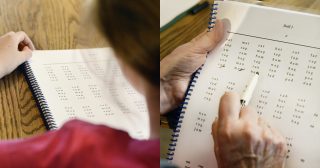










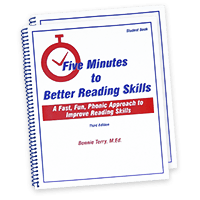
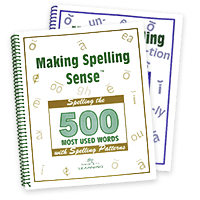
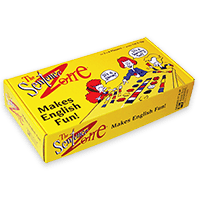

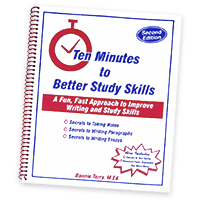
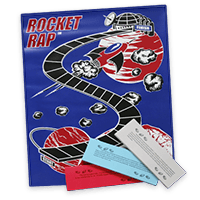
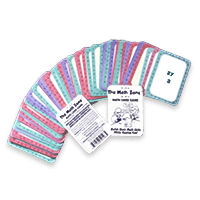
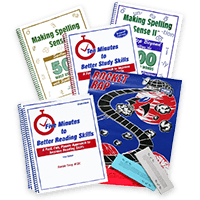
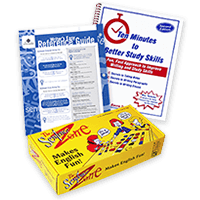
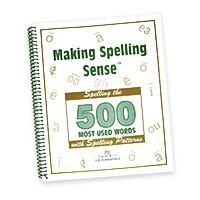









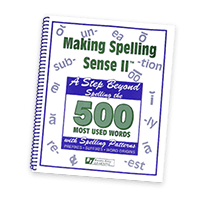
My child cannot copy the class instructions from the white board onto his homework diary in class. I think visual tracking may help him.
Yes, visual tracking exercises will definitely help, like those in Five Minutes to Better Reading Skills. Your child may also have some visual integration and or visual motor issues going on. Those areas also affect copying skills. To find out if oterh areas are not working as effeciently as they should and could, you may want to go through the LD and dyslexia comprehensive informal screening tool.
OK
When my son reads aloud he sometimes reads text vertically between two lines, still reading left to right, but merging the two lines of text. We have tried using a ruler under the line of text he is reading, but he will incorporate the line from above. Is this visual tracking?
Yes, this is a visual tracking problem. I will be going into detail about it and other areas of learning on next Wednesday’s FREE webinar. Be sure to register for it and pass the word along to others.
Yes, this is visual tracking. The Five Minutes to Better Reading Skills program (2 books) work very well on correcting this problem.
My son just had psychoeducational testing. Previous to the testing we were aware of his ADHD but wanted to test for further learning disabilities. The psychologist indicated that he had motor dysgraphia and a visual tracking problem. I don’t really understand why it is “motor” dysgraphia because he has the fine motor skills and has “passed out” of OT. The visual tracking was because he skips words, adds suffixes onto words, skips entire lines and adds entire words that aren’t there. Doesn’t this sound more like dyslexia? He has had his eyes checked. Would a visual tracking problem be discovered during an eye test with a pediatric ophthalmologist?
Hi Shannon,
I do have an informal assessment that is neuro-developmentally and behaviorally based that identifies the underlying causes of visual, auditory, and tactile/kinesthetic areas of learning. This assessment would identify these problems as well as others. It is an assessment that I do with you as the parent since it is behaviorally based. It usually gives you more information than the pschoeducational testing does. After going through the assessment I do offer a phone consult that is recorded and you also get a 12-15 page report that goes over everything that I share with you. I do give you actionable steps that you can implement to address the problematic areas. If you would like a free 30 minute consult let me know.
Bonnie, my son is 20 years old and just finishing first year of college. When he was 18 he was so unmotivated for school work that we had him evaluated with psychoeducational testing. The test showed he was an average to above average learner in every area except those related to non verbal fluid reasoning and the non verbal quantitative reasoning areas. One of the recommendations was to talk to a specialist on visual tracking. I did not follow through because he was giving me such resistance and I just thought he wasn’t motivated at school because he was lazy and/or depressed. I now think he was unmotivated and depressed because of this problem. At 20 years old, do you think his brain or vision problems can be improved through the five minutes to better reading or other resources you know of? I do think he has a visual tracking problem, he struggles in higher level classes such as statistics, economics, things that require reading, processing, and several variables to consider.
Christie,
Yes, the tracking issue will continue to hinder your son until it is address, and it is NEVER too late to address it. I have had 35 year old, 55 year old, and even 64 year old students that have made great improvement once they addressed the visual tracking difficulties. Using the Five Minutes to Better Reading Skills is a quick, down and dirty way to address it in just 5 minutes a day. He will see progress in just a few days – usually by the 3rd time a student uses it they are seeing progress.
Bonnie Terry, M. Ed., BCET
Five Minutes to Better Reading Skills
Hello,
I am a 2nd grade teacher doing some research about some difficulties I notice my students are having. I have been researching colored overlays and also have discovered your 5 minute program. In order to be able to purchase this, I would need some more information on the product. Is there anyway you can help me with that. I would appreciate any additional information you can provide for me. Thank you for your time.
Sincerely,
Crystal Saenz, 2nd Grade
A five year independent study was done showing the improved fluency in a school district in Northern California. Here is more info on the program. I’ll email the 5 year study to you.
Please send me copy of 5 yr fluency study
The eye doctor told us that our twins eyes jump around. He had them read and was surprised at what good readers they were, however there was no reading comprehension. If we go ahead and have them repeat 1st grade so they can mature, will that help? We can also plan to do the exercises and do the 5 minute reading program. Any other suggestios?
Yes, there are a lot more things you can do!!! Would you like a complimentary consultation session where I can tell you some other things you can do? Let me know. newsletter@bonnieterrylearning.com
My daughter is 8 years old shehas trouble reading it is not that she can’t read she just gets so nervous doing it and sometimes she will look at the word and say a word that has the same meaning for example he she will say his or she will skip through and continue on. Someone told me to look into the tracking issue. When she was little she had and issue with crossing her eyes watching tv for to long. She gets good grades she just has trouble reading
Yes, this can be a tracking problem. See Five Minutes to Better Reading Skills to take care of it. It works very quickly – in just 5 minutes a day.
My 7 year old was a late reader but is now at grade level ( he is on level L). His writing however, is atrocious; it is messy, awful spelling, awful mechanics. Besides that he is very smart. He has great comprehension, math and constantly is called the most well behaved focused student in class. He was tested in 1st grade and it showed no LD. I don’t know where to go from here.
There are typically a few areas of perception not working as well as they should be when penmanship is atrocious as well as spelling is awful. You can be very smart, even gifted, and have some areas that aren’t working as well as they could be, should be, and can. The best first step for you would be to contact our office for a complimentary 30 minute consult or go to my calendar here and schedule it yourself. During the consult I can give you my best recommendations of action steps to solve these problems.
Bonnie’s calendar